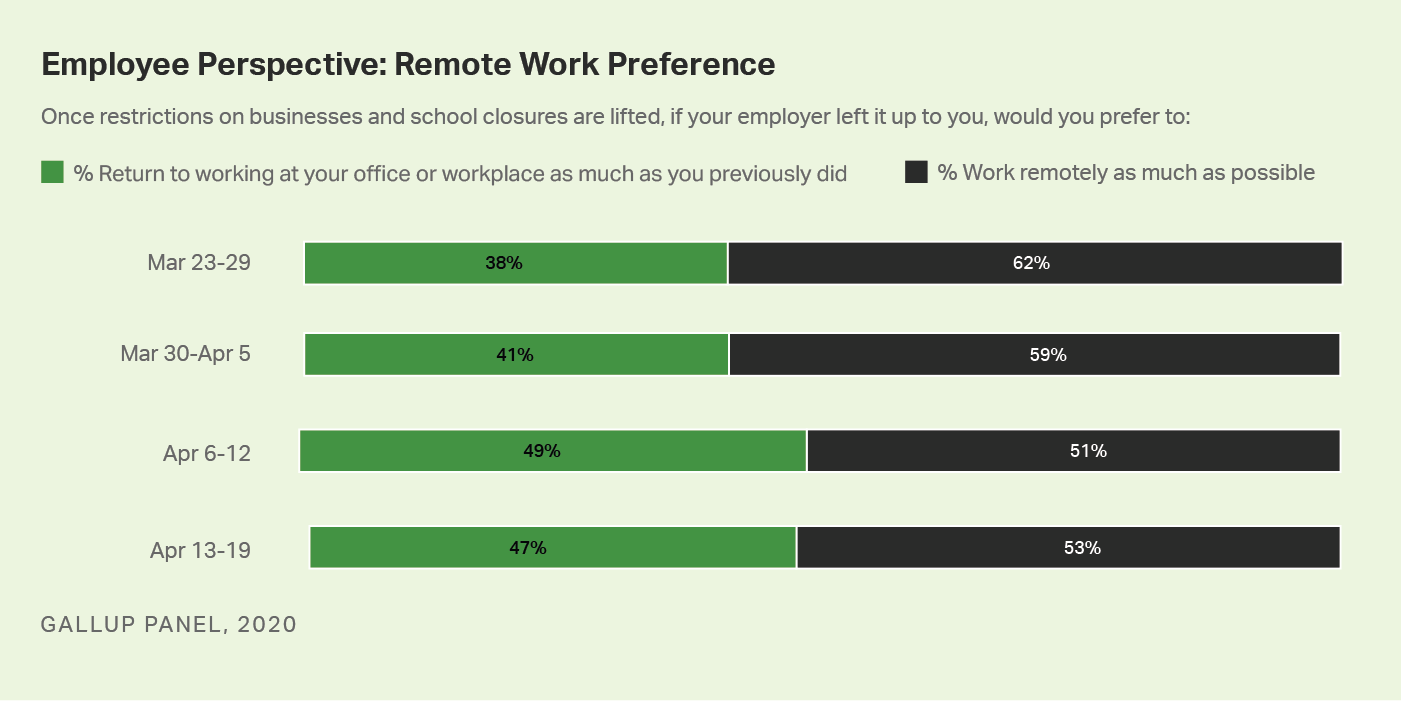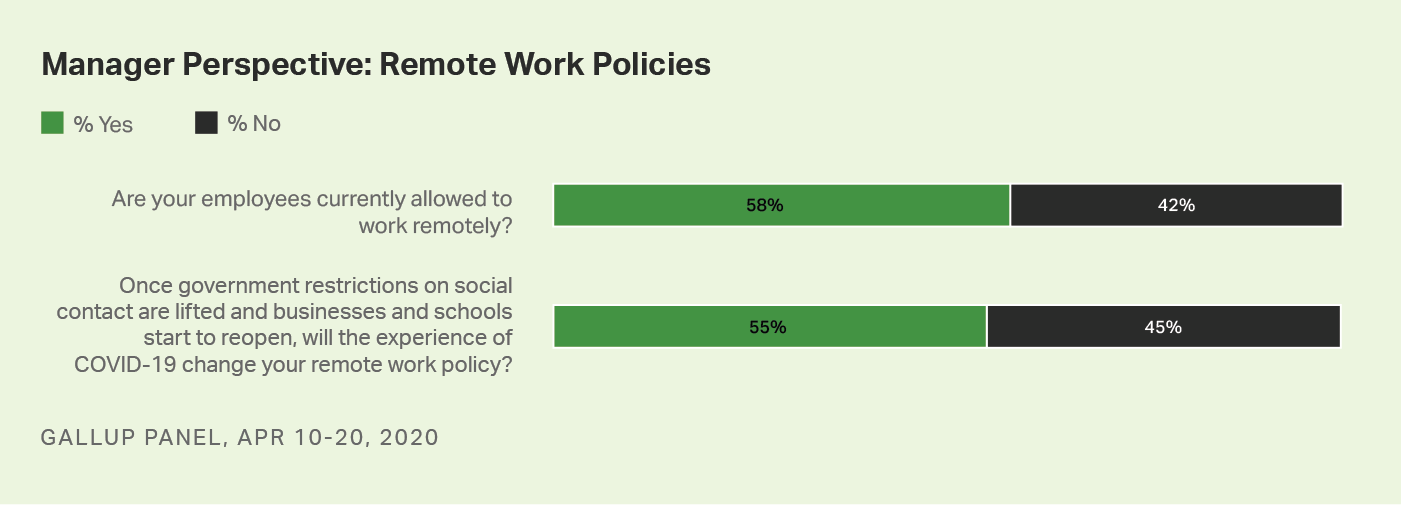Story Highlights
- In three weeks, the percentage of remote workers jumped from 31% to 62%
- Returning employees will be influenced by many factors
- Your remote work policies and decisions will affect employee engagement
Amid COVID-19, most U.S. employees are now working from home. Will this change become permanent?
In three weeks, the percentage of employees working from home doubled, from 31% to 62%. Some jobs were already set up to work from home, others were configured to work from remote environments part of the time, and still others had to transition quickly and completely from 0% to 100% remote.
Even the NFL commissioner and coaches worked from home during the draft this year, with some claiming significant benefits to their wellbeing.
So, what has the experience of widespread remote work been like for employees and managers? And have they learned anything that will make them rethink how work gets done as they approach an uncertain future?
Rethinking the Employee Experience
Even as work and life have become completely blended for many people, more than half of at-home workers say they would prefer to continue working remotely as much as possible once restrictions on businesses and school closures are lifted. It's worth noting, however, that this percentage has dropped from 62% to 53% as employees have had the daily experience of working from home.
Gallup research finds the percentages that prefer continuing to work from home are highest in technology, insurance, arts, entertainment, media, finance and professional services. Those with lower preference to work from home in the future include education, retail, transportation and construction.

What Managers Are Saying About Remote Work
Many managers, too, appear to have learned that working from home can work for the people they manage. About six in 10 managers currently report that the people they manage are allowed to work from home. Among those six in 10, 55% say that once government restrictions are lifted and kids are back in school, the experience of COVID-19 will change their remote work policy. Few managers (7%) say the experience will result in them allowing their employees to work remotely less often, while a slight majority (52%) say they will allow their employees to work remotely more often as a result of this experience. Greater remote work could become the "next normal." This means managers must learn how to lead remote teams and leaders must implement strong remote work cultures.

Gallup databases contain information on the job responsibilities of 550+ jobs, summarized into 35 roles across 20 industries. Recent Gallup Panel data track how the proportion of time spent working remotely has changed from pre- to peak-pandemic and the resulting changes in employee engagement, burnout and preparedness. These database findings -- the subject of upcoming reports -- form a statistical basis for estimating the functional likelihood of success in continuing work-from-home arrangements.
As some U.S. states begin reopening businesses to more on-site work, the ability to estimate the "readiness" of employees from a functional and emotional perspective is paramount.
Organizations will need to use science-based judgment to examine multiple dimensions simultaneously, including:
- the functional role and key job demands
- work space and safety
- the individual's perceived readiness and comfort
- life circumstances
- performance
- creating culture in remote teams
- managing remote teams
- the ability to use one's strengths
- team engagement
- remote team communication
- the dynamics of working together remotely compared with in-person work
As some U.S. states begin reopening businesses to more on-site work, the ability to estimate the "readiness" of employees from a functional and emotional perspective is paramount.
The Complex Relationship Between Remote Work and Employee Engagement
One thing we know for sure: Gallup research reveals that the relationship between remote work and employee engagement is complex.
Those with some remote work options have the highest employee engagement, while those with no remote option and those who work remotely 100% of the time have somewhat lower employee engagement.
This does not mean that high or low employee engagement is guaranteed in any situation. The right approach to performance development is key to optimizing the employee experience, performance and wellbeing, in all situations. But getting the formula right in the current environment demands simultaneous consideration of all of the factors listed above.
Learn more about leading through disruption, and stay up to date on Gallup's COVID-19 research:
- Learn how to best understand and manage remote workers amid COVID-19.
- Register for our webinar "Sustaining Company Culture Through COVID-19."
- Read more articles like this one.
- Check out our resource page, COVID-19: Leading Through Disruption.






